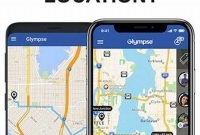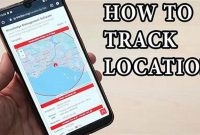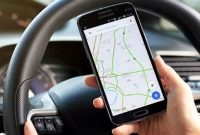Have you ever needed to track the location of someone’s phone but had no idea how to do it? Triangulation might be the answer. Triangulating a phone involves determining its location by measuring the strength of its signal from three different cell towers. This method can provide an accurate location, even in areas where GPS signals are weak. But how does it work, and is it legal? In this article, we’ll explore the basics of phone triangulation and answer some common questions about the process.

The Basics of Phone Triangulation
Have you ever lost your phone and wished you could find it instantly? Well, phone triangulation might just be the solution you need! Phone triangulation is a method of determining the location of a cell phone by using radio signals from three nearby cell phone towers. In this article, we’ll dive deeper into the basics of phone triangulation and how it works.
How Does Phone Triangulation Work?
Phone triangulation may sound complicated, but it’s actually quite simple. When you make or receive a call on your cell phone, your phone sends out a signal to the nearest cell phone tower. This signal includes your phone’s unique ID number, which the tower uses to route your call to the right location.
But what happens if you’re not making a call? Your phone is still sending out signals to nearby cell phone towers, and these towers are still picking up your phone’s unique ID number. By using the signal strength and timing information from these towers, a cell phone carrier can calculate your phone’s location.
This process involves measuring the time it takes for a signal to travel from your phone to each of the nearby cell phone towers. By comparing the signal strengths and timing information from the three closest towers, the cell phone carrier can calculate the location of your phone with remarkable accuracy.
Accuracy of Phone Triangulation
The accuracy of phone triangulation varies depending on a number of factors, such as the cell phone carrier, the location of the towers, and the type of terrain in the surrounding area. In general, phone triangulation can give you a location accuracy within a few hundred meters in urban areas, but this accuracy decreases in rural or remote areas where cell phone towers are few and far between.
Overall, phone triangulation is a useful method for locating a lost or stolen phone quickly and easily. It’s also commonly used by emergency services to locate people in distress. However, it’s important to note that phone triangulation only works if your phone is turned on and connected to a cell phone tower. If your phone is turned off or in airplane mode, it won’t be able to send the signal necessary for triangulation.
How Phone Triangulation Works
Phone triangulation is a location tracking technique that has been widely used by communication companies and law enforcement agencies to track the location of a phone. The process works by measuring the strength of the signals received from three different cell towers and using that information to triangulate the phone’s location accurately.
Triangulation Concept
The technique of triangulation is based on the concept of measuring the difference in time taken for the signal to travel from the phone to different cell towers. Each cell tower has a specific range, within which it can provide coverage. The cell tower continuously broadcasts signals looking for any mobile device in range. When a phone receives the signal, it sends back a response to the cell tower. The time taken for the signal to travel from the phone to the cell tower and back depends on the distance between them. The greater the distance, the longer it will take for the signal to travel.
When a phone is in the range of at least three different cell towers, the time difference between the signals sent and received is measured by the towers, and this information is used to triangulate the phone’s position accurately. The triangulation process allows the phone company or law enforcement to determine the location of the phone within a few meters.
The Role of Cell Towers
Cell towers play a crucial role in the triangulation process. The triangulation works effectively because cell towers are strategically placed, and their ranges are designed to overlap with one another. This ensures that when a phone is within range of at least three different towers, its position can be accurately calculated.
The accuracy of the triangulation depends on the density of cellular towers in the area. In urban areas, the coverage is dense, and the triangulation works effectively, making it easier to identify the position of a phone. In contrast, in rural areas, the triangulation process may not be as effective because the distance between cell towers may be too great.
Limitations of Phone Triangulation
Although phone triangulation is a useful location tracking technique, it has certain limitations that must be considered. The triangulation process can be affected by various factors such as weather conditions, terrain, and physical obstacles.
Additionally, phone triangulation requires the phone’s signal to be in contact with a cellular tower. In situations where a phone has been turned off or is not within range of any tower, the triangulation process will not work.
Furthermore, it is worth noting that the triangulation process is not always well received by the general public, as it can frequently violate privacy rights. It is crucial for the public to be aware of the legality of the use of phone triangulation in different jurisdictions to ensure their rights are being respected.
When is Phone Triangulation Used
Phone triangulation is often used by law enforcement agencies to locate a suspect’s phone in real-time in emergency situations. It is a technique used to determine the location of a phone by measuring the strength of the signal from the phone to nearby cell towers. Triangulation requires at least three cell towers and measures the time it takes for the phone’s signal to reach each tower. Based on this information, the location of the phone can be determined.
How does Triangulation Work?
Phone triangulation requires a process of data collection and analysis. Once a call or text message is made or data transferred from a mobile device, the cellular network receives the signal of the mobile device. The cellular network then forwards the signal to the cell towers that are the closest to the device. The signal strength and the distance from the device to each tower are then collected and analyzed.
- The process of triangulation uses the location of the three cell towers that are closest to the device to create a “triangle” where the device can be located.
- The signals are sent back to the network, which uses its algorithm to find the location of the phone by calculating the intersections of the three circles represented by the ranges.
- The location is generally represented as X, Y coordinates or an address, which is then sent to the requesting device.
The accuracy of phone triangulation depends on various factors such as the density of the towers, the strength of the signal, and the availability of GPS data.
Benefits of Phone Triangulation
Phone triangulation provides a valuable tool for law enforcement agencies in emergency situations. It is often used to locate missing persons, kidnapped children, or suspects in criminal investigations. It can also be used to track the location of a phone in real-time, providing valuable information to the authorities.
Phone triangulation can be an important tool for law enforcement agencies, providing valuable information in emergency situations.
Benefits of Phone Triangulation
Phone triangulation is a powerful tool for accurate location tracking, safety, and security. It is often used in emergency situations where time is of the essence, and pinpointing someone’s location is critical. In addition to its usefulness in emergencies, phone triangulation can also provide valuable information in a range of other scenarios.
Improved Emergency Response
One of the most significant benefits of phone triangulation is its role in emergency response. When someone calls 911 or their country’s emergency number, dispatchers can use triangulation to determine their location and send help quickly. This is especially useful in situations where the caller is unable to provide their location or is in distress and cannot communicate effectively.
In addition to emergency services, phone triangulation can also be useful for search and rescue teams looking for missing persons. By analyzing the signal strength from multiple cell towers, triangulation can provide a more precise location than GPS data alone, which can be especially helpful in areas with poor or no GPS coverage.
Enhanced Personal Safety
Another benefit of phone triangulation is its ability to enhance personal safety. For example, parents can use GPS tracking software to monitor their children’s location and be notified if they venture into unsafe areas or leave designated boundaries. Similarly, companies can use tracking software to monitor their employees’ whereabouts and ensure they are safe while working in potentially dangerous environments.
Improved Asset Recovery
In addition to personal safety, phone triangulation can also be used to recover lost or stolen assets. A company that provides a delivery service, for example, can use tracking software to keep tabs on its vehicles and ensure they are being used responsibly. If a vehicle is stolen, the company can use triangulation to quickly track its location and recover it.
- Phone triangulation is a tool for accurate location tracking, safety, and security, useful in emergency situations
- Triangulation can provide more precise location data than GPS alone, and it is beneficial for search and rescue teams
- GPS tracking software can be used for enhanced personal safety, especially for children and employees working in potentially dangerous environments
- Phone triangulation can also be useful in asset recovery situations, such as recovering stolen vehicles and monitoring delivery services
Limitations of Phone Triangulation
Despite being a reliable tool for location tracking, phone triangulation has certain limitations that can result in inaccuracies. Below are some of the common factors that can affect the accuracy of phone triangulation:
1. Weather
Weather conditions such as heavy rain, snow, fog, or thunderstorms can obstruct radio waves and GPS signals, leading to inaccurate location triangulation. The signals may bounce off objects, including buildings and mountains, resulting in false readings. Similarly, the phone’s GPS receiver may not work properly under such adverse atmospheric conditions.
2. Line of Sight
A clear line of sight between the phone and the triangulating device is essential for accurate location tracking. If the phone is inside a building or in a location with poor visibility, the triangulating device may not be able to receive a clear signal, leading to inaccurate data.
3. Interference from Other Electronic Devices
Other electronic devices, such as Wi-Fi routers, Bluetooth devices, microwaves, and other such sources of electromagnetic radiation, can interfere with the triangulation process. This interference can cause inaccuracies in the location data.
4. Network Coverage
Phone triangulation relies on access to a cellular network to triangulate the location of the phone. If the phone is out of range of a cellular network or not connected to one, triangulation cannot be performed, leading to inaccurate data.
5. Location Data Privacy Settings
While location tracking is a useful feature, some users may choose to disable it due to privacy concerns. In such cases, triangulation cannot be performed, and no location data can be obtained for the phone.
These limitations are essential to consider when using phone triangulation for location tracking. While phone triangulation is an efficient tool, it is essential to keep these factors in mind to ensure accuracy in location tracking.
Legal and Ethical Implications of Phone Triangulation
While phone triangulation can be an effective tool in emergency situations, it also raises legal and ethical concerns, such as privacy rights and the potential for abuse by law enforcement agencies. Here are some key considerations:
Privacy Rights
Individuals have a right to privacy, and any form of surveillance must not infringe on this right. Phone triangulation involves tracking the physical location of a phone, which raises questions about personal privacy. It is important for companies and law enforcement agencies to obtain proper consent or a warrant before engaging in phone triangulation practices.
Respect for Civil Liberties
Since phone triangulation is often associated with law enforcement, it can be seen as an invasion of personal liberties. The potential for abuse, such as tracking individuals without proper cause, is a real concern. As such, it is important to maintain proper oversight and use this technology only when necessary and appropriate.
Emergency Situations and Public Safety
In some instances, phone triangulation can save lives. For example, tracking the location of a lost hiker or a person who has gone missing can be vital to finding them in time. In these cases, the benefits typically outweigh concerns about privacy and civil liberties.
Transparency and Legal Processes
Companies and agencies that engage in phone triangulation must be transparent in their practices. This includes informing individuals of the data that is being collected and providing them with clear instructions on how to opt out of being tracked.
Using Phone Triangulation Ethically
When using phone triangulation for legitimate purposes, it should not be used excessively or frivolously. Instead, companies and law enforcement agencies should take a measured and responsible approach to its use. This includes establishing clear policies for collecting and using location data, as well as training personnel on proper procedures.
Phone triangulation can be a powerful tool for tracking the location of a phone, but it also raises serious legal and ethical concerns. Individuals have a right to privacy, and companies and government agencies must respect these rights and use phone triangulation only when necessary and appropriate.
Frequently Asked Questions
| Questions | Answers |
|---|---|
| Q: Can I triangulate any phone for location tracking? | A: Unfortunately, you can only triangulate phones with active SIM cards. |
| Q: Is it legal to use triangulation for location tracking? | A: Generally, it is legal to use triangulation for location tracking as long as you have permission from the person being tracked or a legal authority. |
| Q: Can I use triangulation to track my lost phone? | A: No, you cannot use triangulation to track a lost phone as the phone needs to have an active SIM card to be located using this method. |
| Q: How accurate is triangulation for location tracking? | A: Triangulation can be accurate up to a few hundred meters, but the accuracy may vary depending on the number of cell towers in the area. |
| Q: Can I triangulate a phone without GPS? | A: Yes, you can triangulate a phone without GPS as this method uses cell towers to locate the phone. |
Thank You for Reading!
We hope you found this article useful in learning how to triangulate a phone for accurate location tracking. This method can come in handy in various situations, but it’s important to use it ethically and with permission from the person being tracked or a legal authority. If you have any further questions or comments, please feel free to leave them below. And don’t forget to visit our website again later for more informative articles on the latest technology trends.




